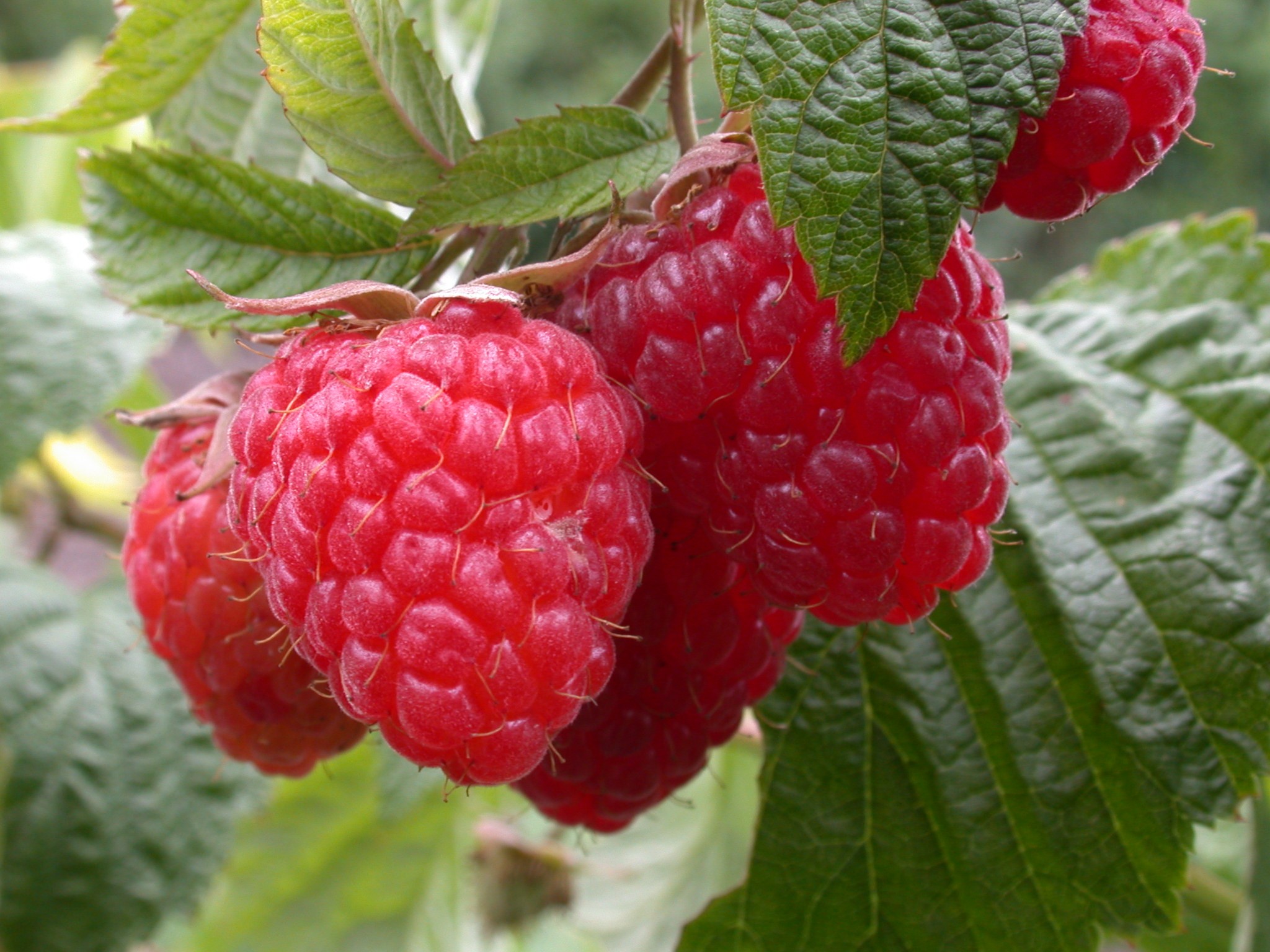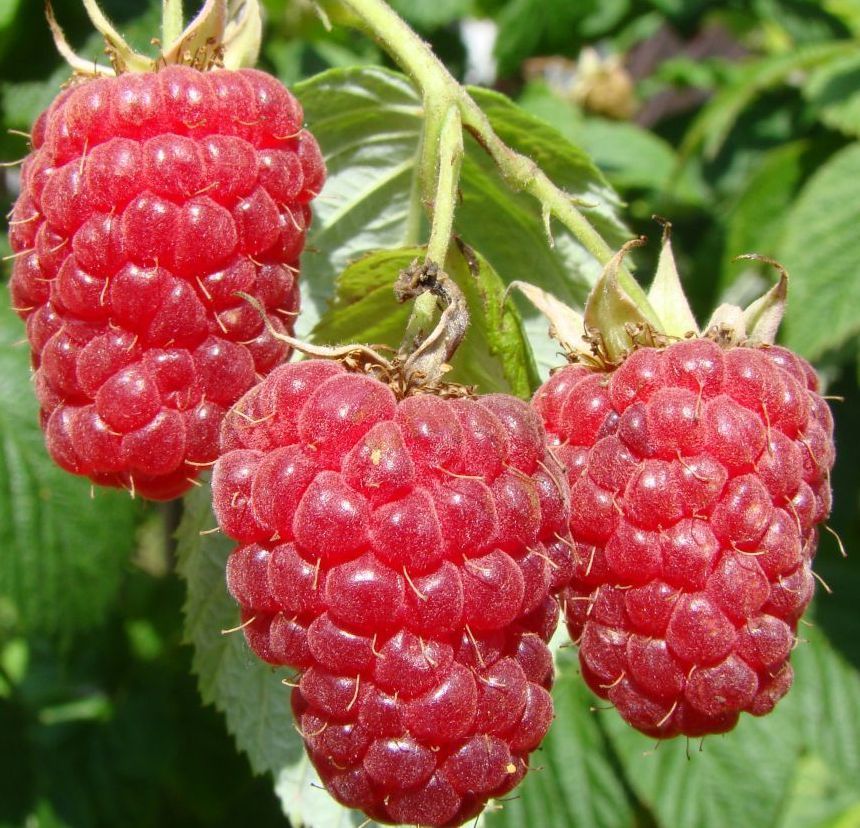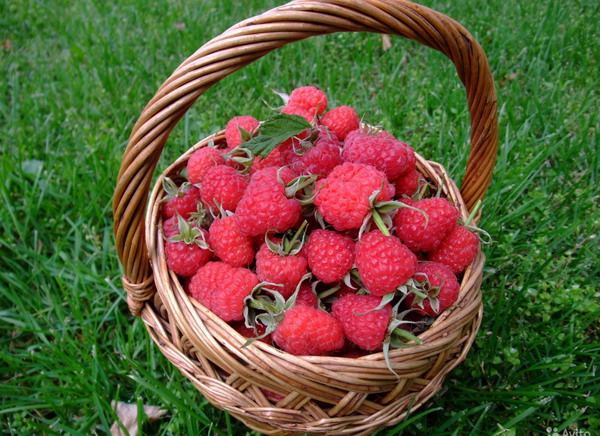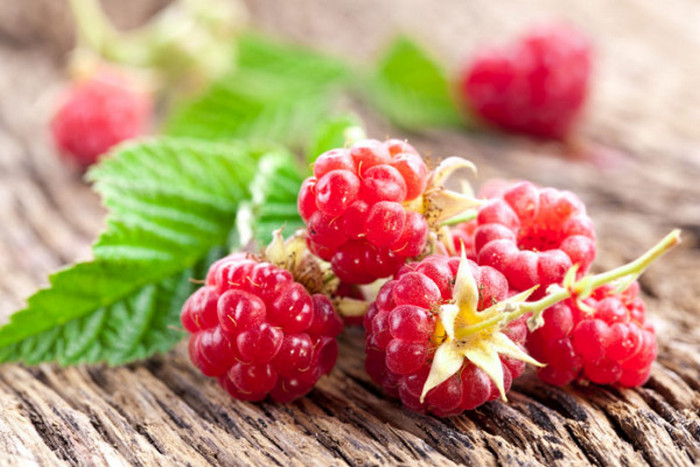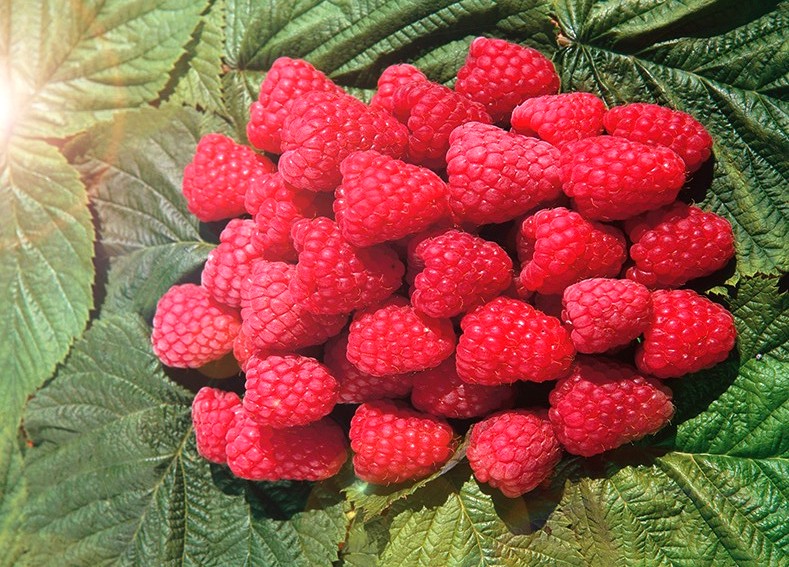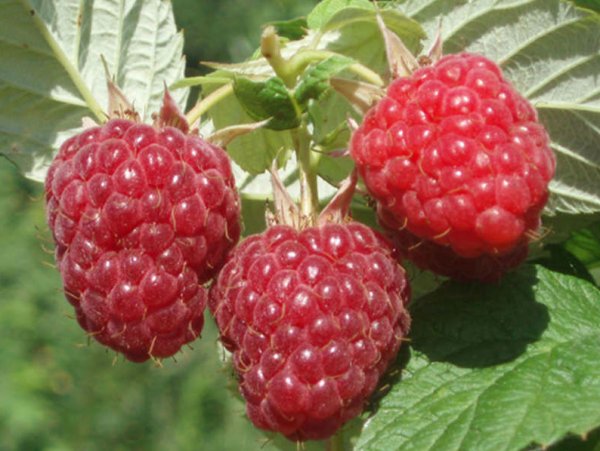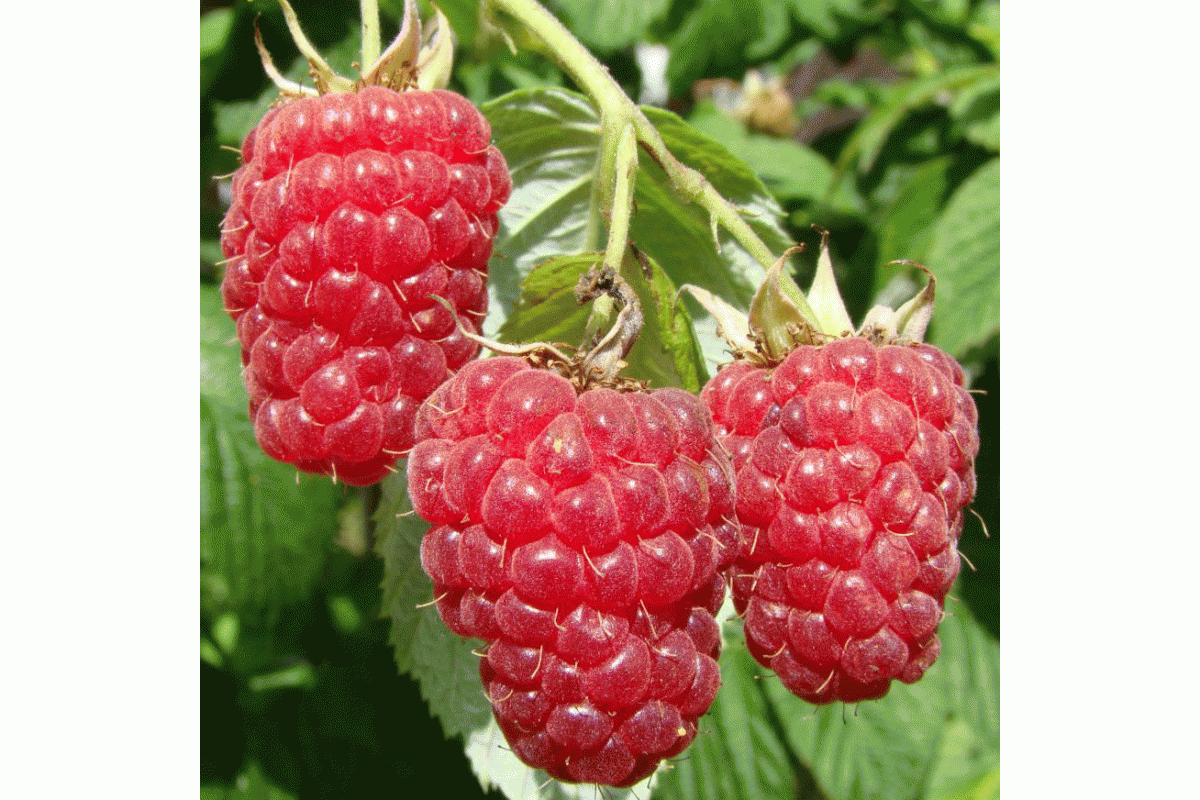Raspberry Unattainable (rubus idaeus remontant) - remontant, one of the earliest ripening crops, it belongs to the elite large varieties. On an equal footing with an attractive and encouraging name, which was presented to her by the famous breeder of the Moscow Institute Viktor Kichin in 1988, the plant is able to delight with a rich harvest of large, juicy, fragrant berries and rich greens almost until mid-autumn.
Features of Raspberry Inaccessible
The variety is produced as a result of independent pollination after sowing a seed mixture of the best selections of the remontant type. In 1990, the plant was assigned its own number P34.
The raspberry bush of this variety is powerful, medium spreading, reaching about one and a half meters in height. At the end of its growth, it forms about seven replacement shoots and the same number of root shoots. The shoots of the plant are quite strong and strong, elastic, the branches are brownish-yellow. Very little wax build-up. Thorns are evenly distributed along the shoots. The leaf plates are flat, of medium size, the edges are crenate, bright green.
Raspberry remontant Inaccessible has very large berries of a blunt-conical, elongated shape. The color is deep scarlet with a ruby tint. The surface of the fruit is shiny. The berries taste sweet with a hint of sourness, the smell is fragrant. The bones are so small that they are practically not felt during tasting. The fruits are located, closely pressed to each other. The fruiting top forms up to four branches. The sweet and incredibly juicy fruits of the plant are collected in piles of up to fifty pieces. Fruit ripening starts from the upper tiers. The Inaccessible raspberry variety grows rapidly, forming more and more shoots and shoots of the root system, which favors the rapid reproduction of garden culture.
Attention! Taking into account the fact that the variety begins to bear fruit one of the first among remontant (literally from the middle of summer), even three weeks earlier than "Indian Summer", then it can rightfully be awarded the title for the duration of fruiting.
The collection of raspberry berries can be carried out at short time intervals (lasting 5-7 days), in a similar way, there are about six waves of fruiting per season. In terms of yield, raspberry Inaccessible claims to be the leader, because from one bush during the season you can collect from three to six kilograms of berries (with proper care).
The plant has colossal winter hardiness - a shrub covered with snow can withstand frosts reaching forty degrees. It is for this reason that the Unattainable raspberry variety takes root well in the Moscow region, Siberia, and the Far East.
Pros and cons of the variety
The description of the Unattainable raspberry variety cannot touch on both its advantages and disadvantages. Competent care can provide not only a favorable environment for growing a plant, but also relieve you of negative aspects.
Among the advantages are the following:
- unusually early harvest time;
- the compact size of the shrubs provides a chance to use a compacted planting, thereby increasing the yield per square meter;
- attractive appearance of berries (red and raspberry color of berries draws attention to the fruits) and the highest taste characteristics.
Additional Information. Along with the favorable parameters, it should be noted that there are nuances due to which there may be an amateur gardener who refuses to grow this variety.
Negative parameters include:
- direct interdependence of taste on synoptic conditions;
- a huge number of young shoots;
- intolerance to drought and heat;
- constant need for regular feeding;
- a tendency to develop chlorosis due to a lack of mineral fertilizers or sunlight;
- low adhesion of the berry and, as a result, poor transportability.
Basic rules of care
It is extremely important to remember that proper planting of seedlings directly affects the yield. It is necessary to plant raspberries in the ground in spring or autumn.
The place chosen for breeding plays a huge role:
- The plant takes root best in loamy soils with a neutral acidity level;
- The groundwater level should not exceed one meter;
- Avoid drafts and shaded areas in the garden;
- The area near blackberries or rose hips is perfect. Such a neighborhood will not only provide favorable growth, but also prevent verticillitis diseases. It is not recommended to plant the plant near crops such as potatoes, eggplant or tomatoes. Such vegetables are extremely depleting of the soil.
Fundamental instructions for planting raspberry seedlings Inaccessible:
- The distance between the bushes is directly related to the chosen planting method. For the trench method, it should not exceed fifty centimeters, and for the bush method, one meter;
- Seedlings should be planted at an angle of forty-five degrees;
- It is not recommended to immerse the neck completely in the soil. It should slightly exceed the ground level;
- Young bushes are covered with soil and compacted tightly;
- Further, near the roots, it is required to form a small hole and pour several liters of liquid into it;
- The soil around the plant must be mulched, preferring sawdust or clean soil;
- After the planting is made, a cut is formed from the seedling, no more than thirty-five centimeters long.
The characteristic of the Inaccessible raspberry boils down to the fact that feeding is an integral part of caring for raspberries. Thanks to competent and timely feeding, it is possible to finish off large crops.
Experienced experts advise to carry out this process in three stages:
- in early spring;
- before the first flowering;
- after fruiting.
With strict adherence, the pruning routine is done after the autumn harvest of berries, fresh seedlings are left untouched, the old ones are cut off at the root without leaving hemp. After overwintering, it is necessary to carry out additional pruning, removing frozen shoots and damaged by pests, as well as tops, with the exception of healthy buds.
Important! The pruning process carried out in warm favorable weather, instead of a positive result, can lead to unfavorable consequences: growth can become untimely, just like the development of new young buds.
When preparing raspberries Unreachable for winter, a number of stages should be carried out:
- In autumn, the bushes are completely cut off, and the area is covered with a ten-centimeter layer of peat, sawdust or shavings;
- It is not recommended to use straw or dry hay as a covering material, as rodents can breed under them;
- In the case when young shoots remain after pruning, they are tilted to the soil and tied to a wire in such a way that the distance between the soil and the shoots is ten centimeters. After that, the bushes are covered with spunbond or roofing material.
Of course, the Unattainable raspberry requires care and proper care from the gardener. Having learned all the subtleties, you can easily achieve rich fruiting from a plant of appetizing, sweet and ripe berries.
